Museum Kimchigan (뮤지엄 김치간)
125.47811569478326m 3901 2019-01-21
Seoul, Jongno-gu, Insadong-gil 35-4
+82-2-6002-6456
Le Museum Kimchikan désigne un musée unique dédié au kimchi et au kimjang, et revenant longuement sur les processus de fabrication du kimchi, aliment classé au patrimoine de l'UNESCO. Le musée a aussi été sélectionné par CNN en mars 2015 comme l'un des 11 meilleurs musées autour de la gastronomie.
Okjeong (옥정)
125.6364217091388m 20936 2021-03-19
18, Insadong, 12-gil, Jongro-gu, Seoul
+82-2-733-5412
A traditional Korean restaurant serving hanjeongsik (Korean table d'hôte) for 30 years now. The representative menu is Korean table d''hote. This is a Korean cuisine located in Insa-dong, Seoul.
Institut 'Kimchi Museum' - (풀무원김치박물관)
126.29937359667554m 6762 2019-07-24
35-4, Insadong-gil, Jongno-gu, Seoul-si
+82-2-6002-6456, +82-2-6002-6477
Le musée du Kimchi, fondé en 1986, expose tout ce qui est en rapport avec le Kimchi et sert également de lieu de recherche sur cet aliment typique de la Corée. C’est l’entreprise Pulmuwon Kimchi qui, en 1986, a ouvert ce musée du Kimchi afin de faire connaître cet aliment typique aux coréens comme aux visiteurs étrangers.
Kimchigol Well-being Bapsang(김치골웰빙밥상)
126.15915886439969m 6 2020-10-30
22-5, Insadong-gil, Jongro-gu, Seoul
+82-2-720-6436
A restaurant where you can try kimchi, a Korean traditional dish, and meat. The representative menu is napa wraps with pork. This is a Korean cuisine located in Insa-dong, Seoul.
Galerie Gongpyeong du Centre d'art Séoul (서울아트센터 공평갤러리)
127.6034774297712m 1792 2021-06-19
32, Ujeongguk-ro, Jongno-gu, Seoul-si
+82-70-4214-0070
Ouvert en 1992, le centre d’art Gongpyeong est un espace de 1652 m2, construit sur 2 étages avec 4 hall d’exposition.
C’est un des bâtiments principaux d’Insa-dong exposant divers oeuvres d’art, de l’occident en passant par les peintures coréennes jusqu’aux sculptures.
En hommage aux peintures coréennes qui gagnent un intérêt grandissant auprès du public, ce lieu consacre 2 ou 3 expositions annuelles exclusivement centrées sur elles.
Nuri (누리)
132.16263941092586m 7603 2019-11-26
23, Insadong 14-gil, Jongno-gu, Seoul
+82-2-736-7848
Located in the neighborhood of Insa-dong, traditional Korean lunch box and tea restaurant Nuri brings out the true beauty of hanok while implementing western dining culture with tables and chairs.
Nuri uses the finest grains directly from agricultural regions throughout the country, offering nutritious rice along with mildly seasoned side dish menus, taking advantage of the ingredients' natural flavors. Nuri uses its effective take-out and delivery system to cater to businesses and events.
Insadong Geujip (인사동그집)
137.92613144069682m 28000 2020-04-24
3, Insadong 12-gil, Jongno-gu, Seoul
+82-2-737-0575
Insadong Geujip, located in the famous neighbourhood of Insadong, is a Korean fusion restaurant that is particularly well known for its traditional, yet unique interior. Along with “Insadong Seafood Rice,” and “Insadong Geujip On Rice”, diners can find a range of delicacies including Hanbang
Bossam (Herbal Napa Wraps with Pork), Savory Seafood & Spring Onion Pancake, and Kimchi Parae Pancake on the menu.
The restaurant's specialty, Geujip On Rice, a sort of Bibimbab made with a variety of seafood, vegetables and edible flowers and mixed together with rice and a red pepper paste called gochujang. The basic serving size is large enough to feed two.
The restaurant is housed in an old hanok (Korean traditional house) and has been carefully renovated to preserve the house’s traditional feel. Indoor lights wrapped with hanji, Korean traditional paper, shine a soft glow over the entire dining area and add to the overall ambience.
Nwijo(뉘조)
148.35496800856657m 14685 2021-04-19
27, Insadong 14-gil, Jongno-gu, Seoul
+82-2-730-9311
Nwijo (뉘조) is a Korean restaurant specializing in wild vegetable cuisine. The name ‘Nwijo’ means ‘the god of the silkworm,’ and likens wild vegetables to silkworms in that both can be eaten in their entirety. The restaurant serves original full-course Korean meals that are prepared using hundreds of kinds of wild vegetables, including special seasonal vegetables.
A typical full-course meal starts with delicious pumpkin porridge, followed by seasoned wild vegetables, root vegetable ssam (condiments wrapped in vegetable leaves), slices of boiled meat, and steamed lotus leaf-wrapped rice served with jjigae (Korean stew) and various side dishes. This kind of traditional feast is pleasing to both the eye and the palate and is topped off with sikhye (traditional sweet rice drink). Lunch specials are also available.
Calligraphie Bongwon (봉원필방)
157.69256370572654m 1227 2017-09-18
27, Insa-dong, Jongno-gu, Seoul-si
+82-2-739-9611
Situé près du carrefour de la rue d’Insa-dong, le magasin de calligraphie Bongwon propose à ses clients du matériel de calligraphie de première qualité depuis plus de 30 ans. Les produits sont vendus à des prix particulièrement intéressants car c’est la boutique qui fabrique et vend ses articles. C’est l’une des plus grandes boutiques de calligraphie à Insa-dong, et elle est souvent fréquentée par des experts en calligraphie. Des produits sur mesure sont disponibles sur demande.
Jirisan Restaurant (지리산)
158.92128222165894m 27614 2019-08-01
30, Insadong 14-gil, Jongno-gu, Seoul
+82-2-723-4696
Jirisan is one of the representative Korean restaurants in Insa-dong, an area known for its traditional culture. One of the trademarks of this restaurant, besides its amazingly delectable bean and tofu dishes, is a wooden sign that welcome guests into a neat and cozy interior.
Each day, fresh beans are ground at the restaurant to prepare dishes such as soybean paste, soft tofu, and bean-curd tofu stew. Bean-curds are prepared by using seawater, which gives the tofu a unique flavor. The fresh and clean taste of the tofu is one of the many reasons that choosey tofu aficionados flock to the restaurant.
Not just limited to tofu, Jirisan presents customers with a full-range of side dishes such as kimchi, japchae (glass noodles with sautéed vegetables), cucumber kimchi, seasoned seaweed, braised lotus roots, roasted yellow corbinas (a type of fish), leafy greens, bean-curd stew, and more. The restaurant gives visitors a chance to experience a hearty traditional Korean-style meal, but has thoughtfully toned down its seasonings to appeal to a wider audience (particularly those not used to spicy foods).
One of the recommended menu items is the Jirisan set meal, which offers diners the chance to sample foods that are popular in the Jirisan region. Adventurous diners may want to try the sea urchin soup or dried Pollack soup.
The restaurant, originally a traditional Korean house, has been modified over the years to better suit the needs of its customers. The walls surrounding the structure were removed and a glass ceiling was installed to allow guests to enjoy the natural light of the sun as they sample some of the area’s best traditional Korean cuisine.
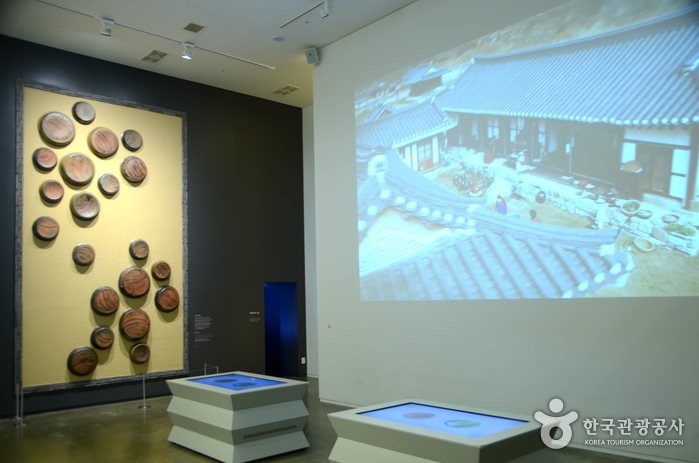
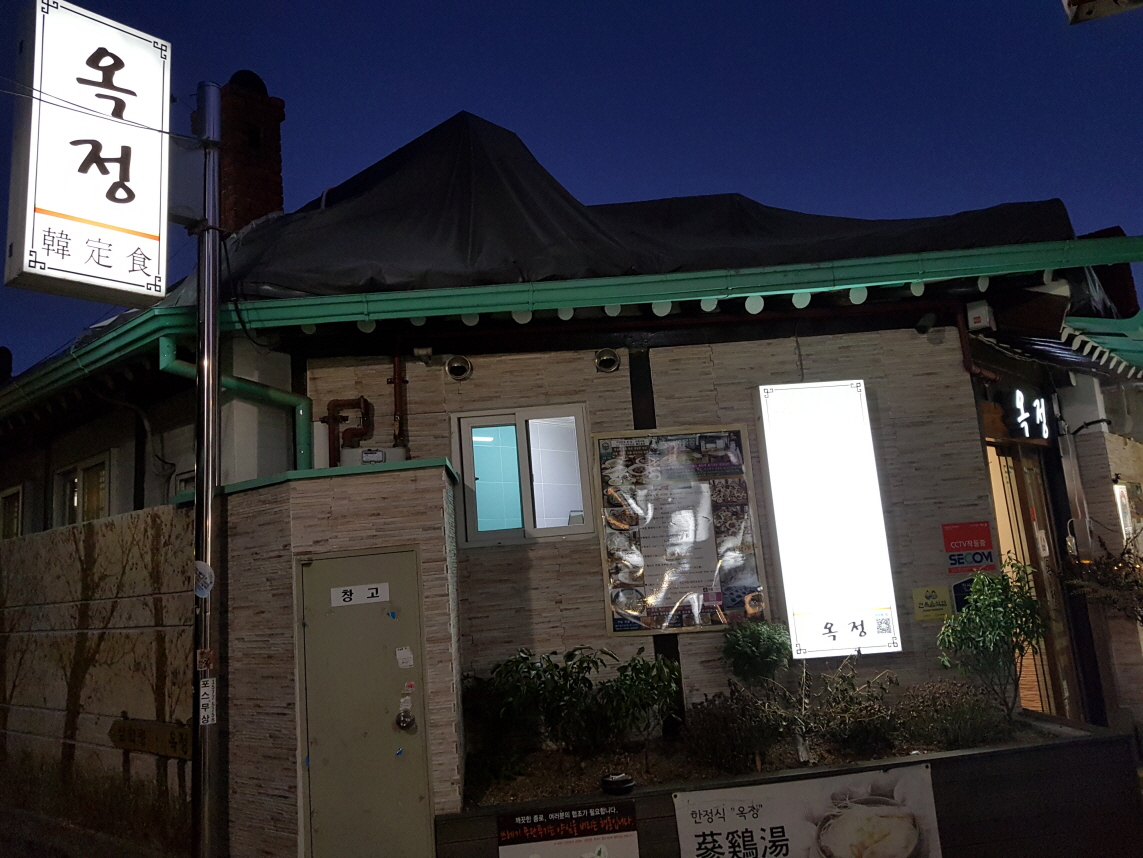
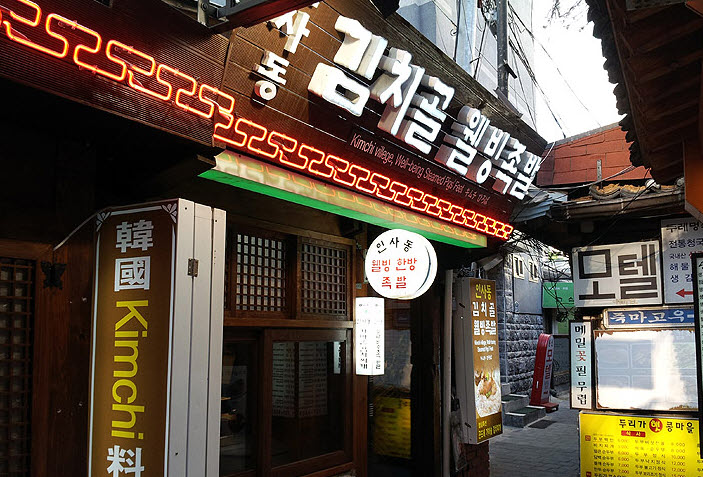
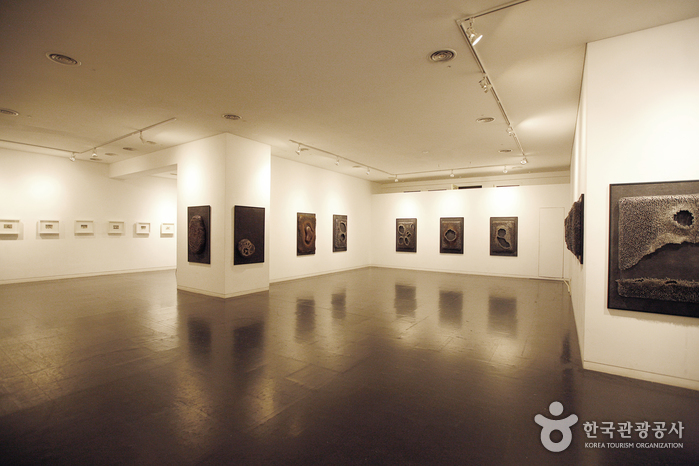
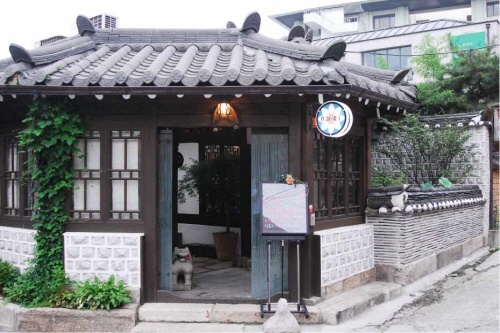
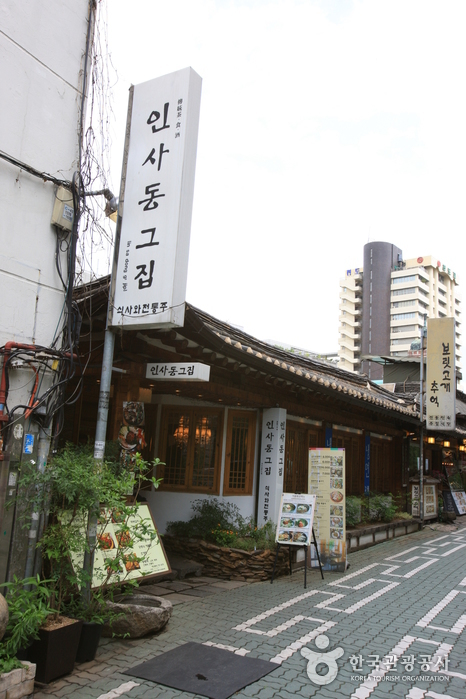
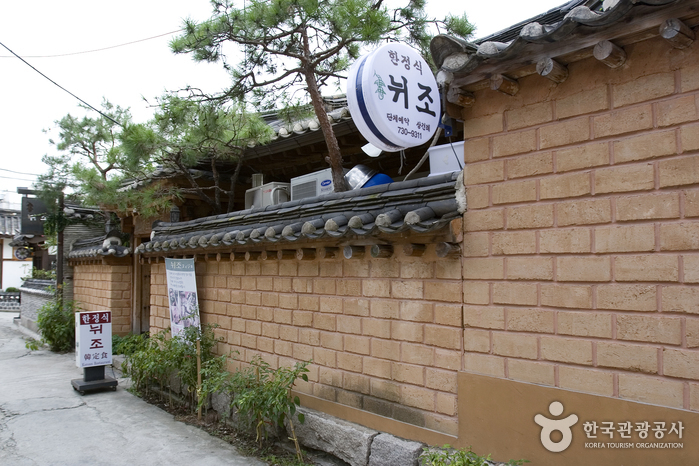
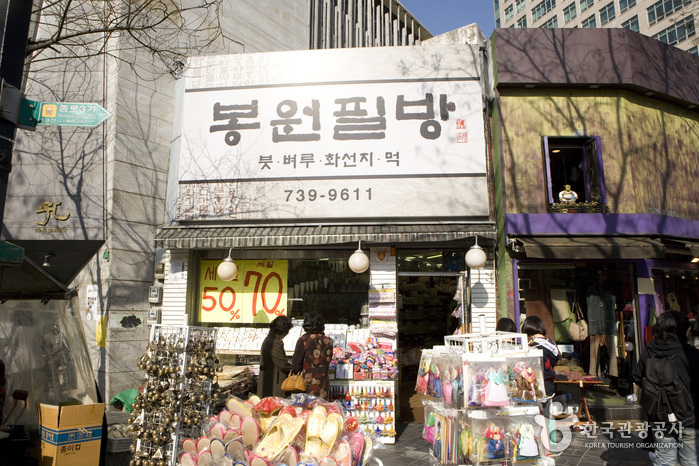
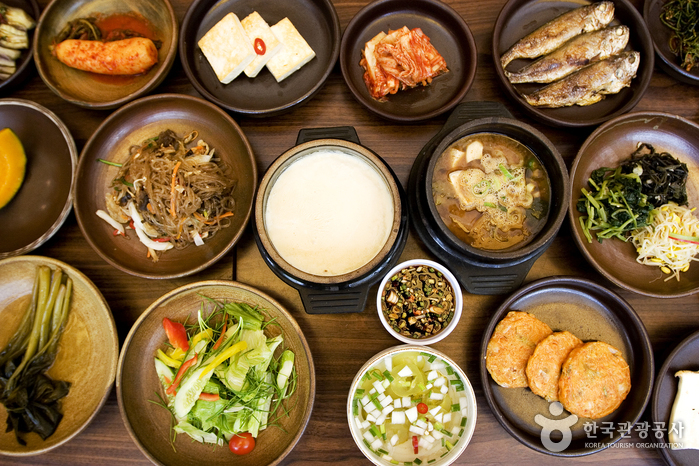
 Français
Français
 한국어
한국어 English
English 日本語
日本語 中文(简体)
中文(简体) Deutsch
Deutsch Español
Español Русский
Русский